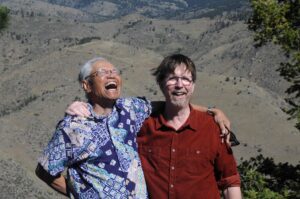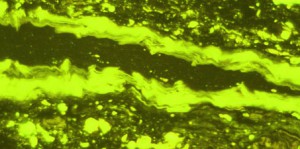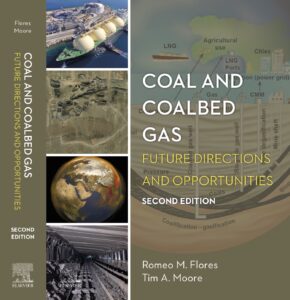It is no secret that the mere mention of the word coal is divisive. Yet, people on either side of the debate have a far from adequate understanding of what coal actually is. Practically no one who is talking about coal these days has the faintest idea of the conditions under which it is formed, it’s properties or how it can be used.
The blunt fact is that coal will continue to be utilized for the foreseeable future.
Equally, though, the use of coal and coalbed gas will have to change and how it is exploited is going to be significantly different in the near term.
So, no matter where you sit in the debate it would behoove all who care about facts and critical thinking to make that extra effort and understand this wonderful rock.
Yes, I said wonderful rock.
I’ll get to the published book in a moment, but first just let explain that last statement.
Over the last 45 years I’ve examined coal in all its aspects. From studying peat in Indonesia and New Zealand to understanding how plants accumulate in a mire, which are later buried and transformed through heat and pressure into an almost purely organic rock. In case you don’t know, that is volumetrically rare in the geological record but they are wonderful ciphers for the Earth’s past. Those preserved pieces of plant organic material date back to the Silurian (over 400 million years ago), and they can tell us about palaeoclimates, palaeoecologies and palaeodepositional processes in very deep time.
If you are a geologist trying to understand how the Earth works and you don’t consider the organics in the sedimentary record, you are missing a huge piece of the puzzle. It’s like having a brand new Scanning Electron Microscope but failing to plug it in.
Yes, coal is used to power our lives and create the steel for our cars, homes and factories but it is so much more than that. Certainly, the utilization of coal emits carbon dioxide, something that we should and can reduce. But lets not lose sight of the scientific method of always questioning.
For the scientists among us, we must transcend the politicized noise that surrounds organic-rich sediments. For those non-scientists, I’d encourage you to learn more, and this book is actually an excellent avenue to do so. At the very least, this would
allow a firmer foundation from which to debate.
My friend and colleague Romey Flores as well as myself are the authors of the book ‘Coal and Coalbed Gas: Future Directions and Opportunities’. It’s the second edition of the original that Romey published in 2014. It has been updated and revamped especially in light of the global momentum towards net zero emissions.

Out-take during the author photograph session. It’s my favourite one. Romey on left. Denver, Colorado August 2022. Romey is laughing because I just caught him standing on a rock to be as tall as I am. (Photograph by Lisa Rukstales)
This multidisciplinary volume covers everything from exploration of coalbed gas to its transport in pipelines and tankers, from the formation of peat to coal’s utilization in thermoelectric power plants. In this book you will find topics on the local to global environmental and groundwater impacts from development of coal and coalbed gas as well as discussion of global climate change due to CO2 and CH4 emissions from power plants, coal mines, and peatlands. The future of organic-rich horizons such as coal is also examined and how innovative uses of solid carbon ore sourced from coal can contribute to a global net zero carbon emissions world.
This new edition introduces the latest in coal geology research and the engineering

Microscopic view of 35 million year old plant material. Study of these organics tell us about past life on Earth. (Field of view is about 300 µm from left to right).
of gas extraction. Importantly, the second edition examines how, over the last 10 years, research has both changed focus and where it is conducted. This shift essentially depicts “a tale of two worlds”—one half (Western Europe, North America) moving away from coal and coalbed gas research and production towards cleaner energy resources, and the other half (Asia–Pacific region, Eastern Europe, South America) increasing both research and usage of coal. These changes are marked by a precipitous fall in coalbed gas production in North America; however, at the same time there has been a significant rise in coal and coalbed gas production in Australia, China, and India.
Read the Foreword by Professor Joan Esterle (you can access that without a purchase by going to the Elsevier site) and see what she says. It’s an excellent overview.
The book is available for purchase in electronic or hard copy form. You can get both for just a slight increase in cost. Great to ‘carry’ around in your computer but it’s also good to flip through a hard copy at your desk.
Go order it now from the Elsevier website: https://shop.elsevier.com/books/coal-and-coalbed-gas/flores/978-0-323-85937-0
Come join us for a book launch hosted by the Geological Society of Australia will be held in Brisbane and online on the 29th of February 2024. Keep an eye out and I’ll post details on that closer to the date.




Comments are closed.